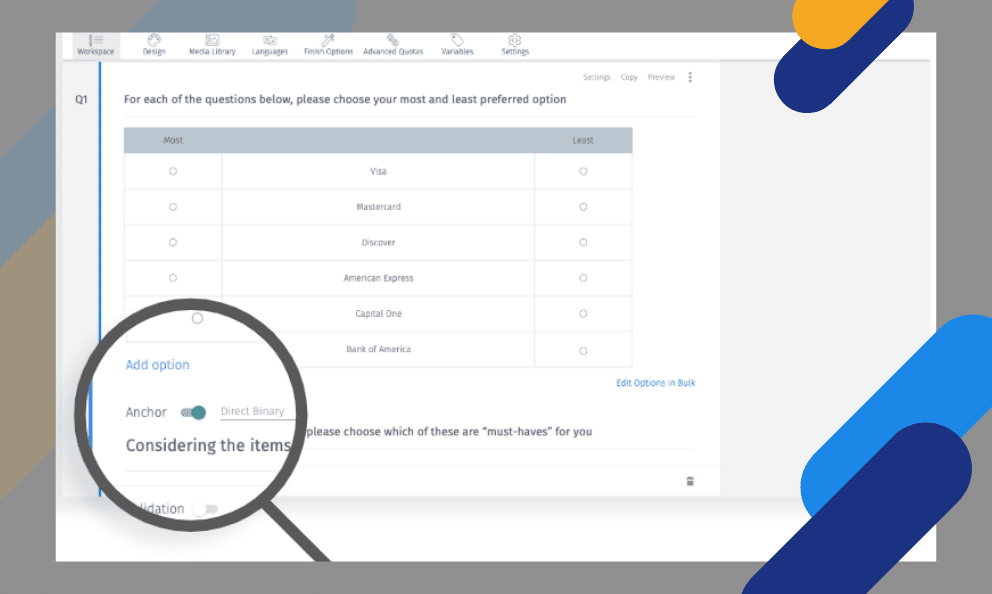 Reading Time: < 1 minute read
Reading Time: < 1 minute readIf you weren’t able to make it to the kick off of our conversation around Anchored MaxDiff then we have got you covered. We were joined by Scott & Chris from DeckChair Data to talk about MaxDiff Scaling and introducing the concept of “Anchoring” to give better meaning to the MaxDiff share of preference calculations & models. Anchored Max-Diff allows us to scale the relative scoring model down to an absolute scoring model.
Key takeaways
- MaxDiff is a great model for “discriminating” between a set of options. It has low cognitive stress on respondents and most folks can tell easily what’s their “best” and “worst” option given a set of choices. It also has a high discrimination value.
- Anchoring allows us to determine a practical scale – what % of people would actually get affected / will buy / or will NOT buy. Creating logical benchmarks for the study.
- The way you ask the “anchoring” question does matter. Eg: What amongst these options is a MUST HAVE. i.e Something that you cannot live without?
Qual before Quant – make sure to use a qualitative exercise before running a large quantitative model to determine all the options that don’t have implicit bias. Avoid the red-bus/blue bus problem; IIA (Independence of Irrelevant Alternatives)
LEARN ABOUT: Implicit Data
Resources
Anchored Max Diff help file
Anchored Max Diff – DataSheet
View the webinar slide deck: click here
Watch the full webinar below:







